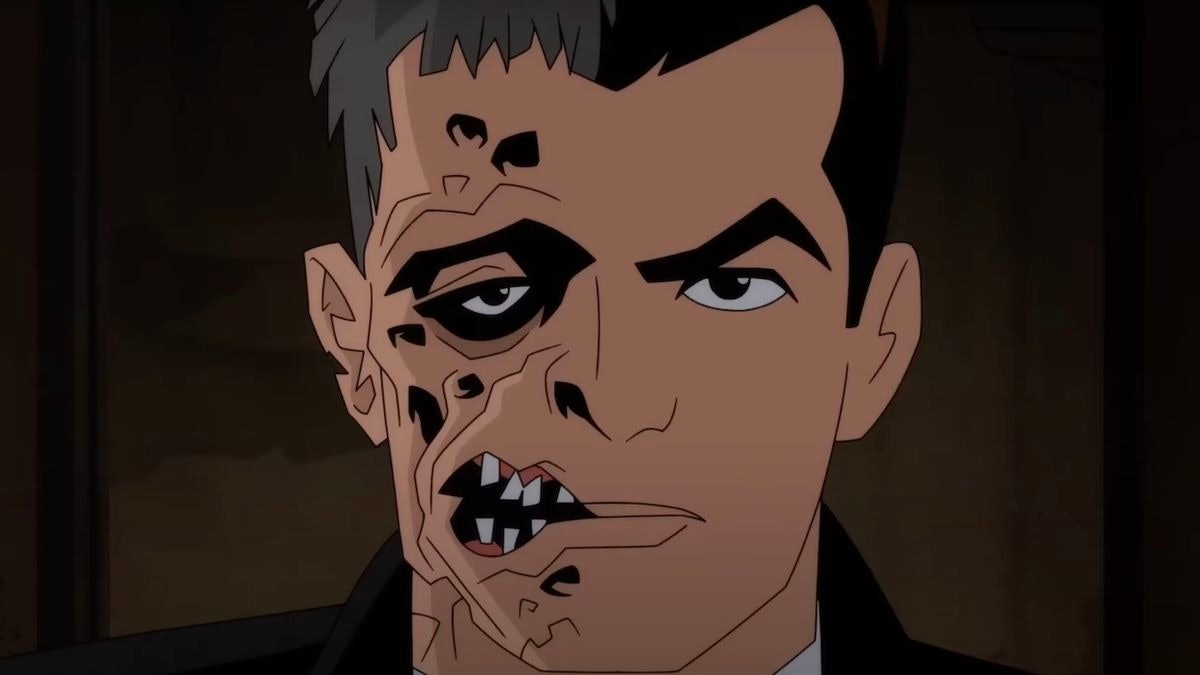
Bruce Wayne sits opposite Harvey Dent at a luxurious, white-tablecloth restaurant. They banter like old friends, but there’s a hint of boyish rivalry just beneath the surface, and also, deeper down, something darker. It’s a moment comic book fans are immensely familiar with: a tête-à-tête between Batman and Two-Face, but in this latest rendition, something feels different.
After teasing his transformation from ambitious district attorney to schizophrenic supervillain throughout the season, Batman: Caped Crusader finally takes the plunge in its eighth episode. When Harvey refuses to cover for a Gotham City crime boss, he ends up with a face full of acid. Bruce invites him out to dinner to cheer up his friend, but his ulterior motive is to figure out who was behind the attack. Pushed too far by Bruce’s line of questioning, Dent makes a scene as he loudly removes his bandages, revealing a take on Two-Face simultaneously more subtle and more terrifying than anything we’ve seen before.
“That's one of my favorite scenes in the whole season,” Caped Crusader head writer and comic book legend Ed Brubaker tells Inverse.
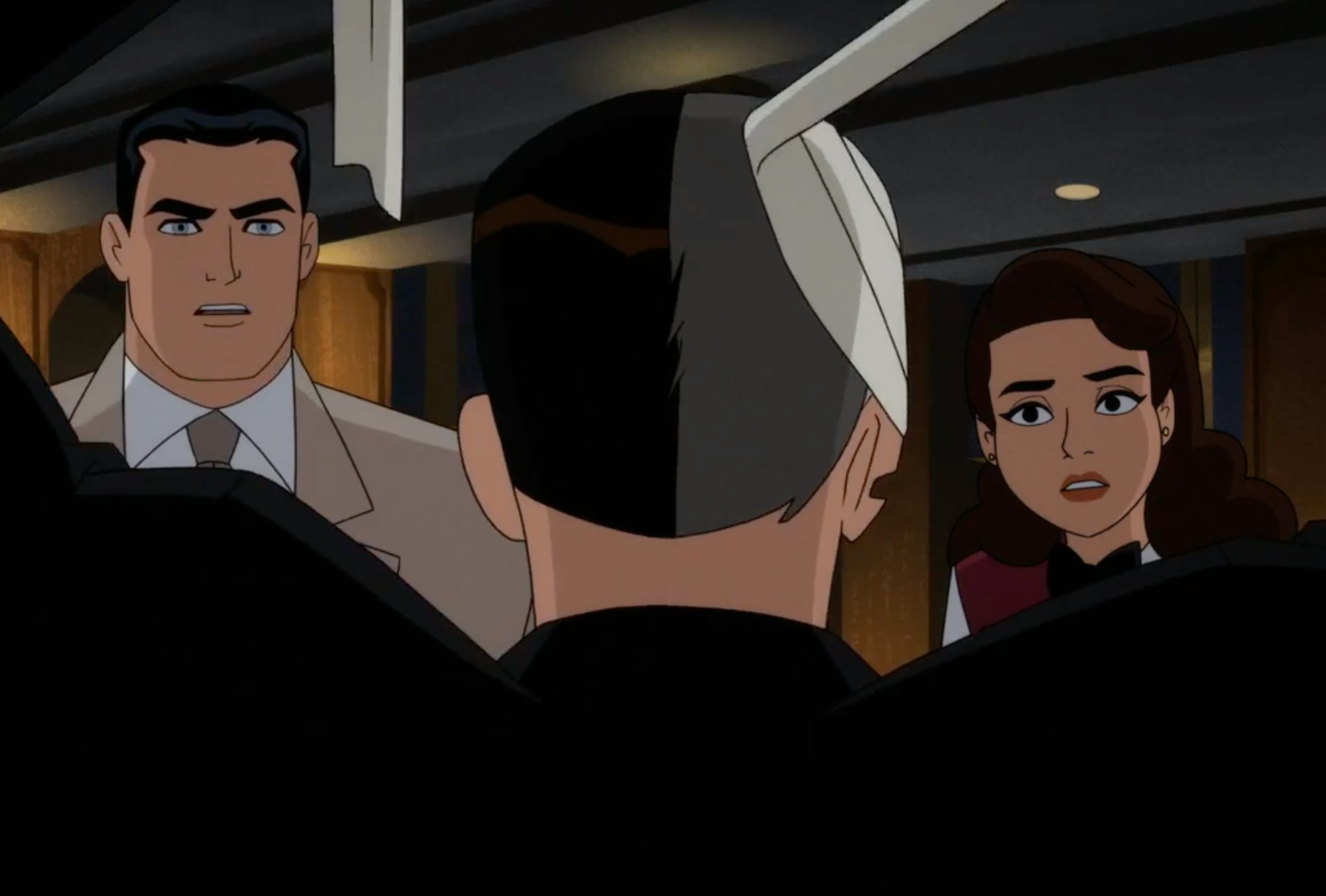
But for Diedrich Bader, who voices Two-Face in Amazon’s new animated show, that scene carries a very different memory, one muddied by the death of a close friend whose name has been associated with Batman for over three decades.
“That was the most intense scene that I've ever recorded, but for something almost outside of the story,” Bader tells Inverse. “The day before I recorded that, my dear, dear friend Kevin Conroy died, and the fact that I was talking to Bruce Wayne the day after was very intense. So I don't actually strictly remember that scene. It was like a dream state, and I was having trouble between takes because it was a very raw moment for me.”
Kevin Conroy will forever be associated with Batman. He first voiced the character in Batman: The Animated Series starting in 1992 and went on to portray the role in dozens of shows, movies, and video games. He even played a live-action Batman in the CW’s Arrowverse crossover Crisis on Infinite Earths and voiced the role one final time in an animated trilogy based on the same comic book event.
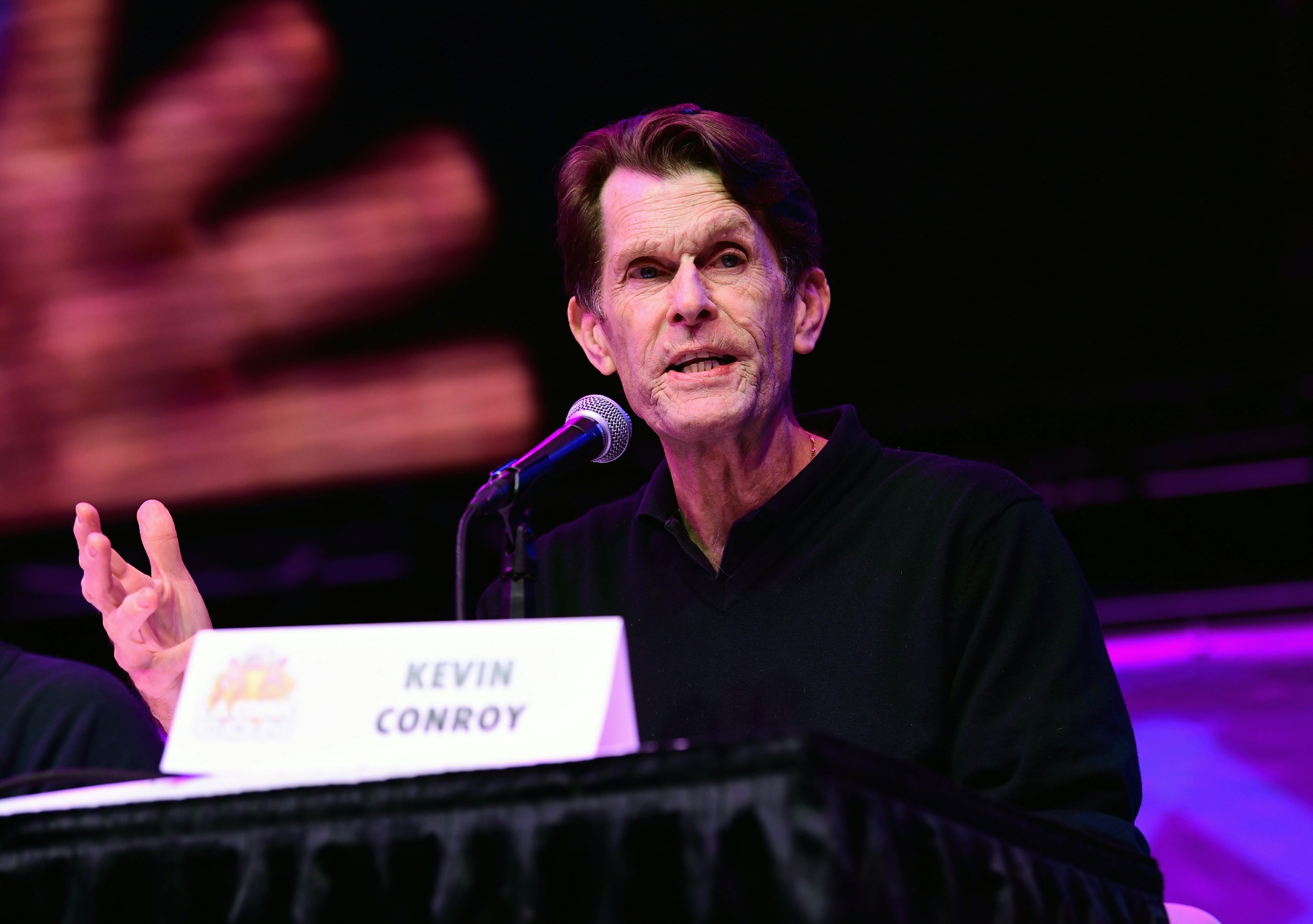
Caped Crusader is in many ways a fitting tribute to Kevin Conroy and his work in the DC universe. With a visual design and gothic noir tone clearly inspired by The Animated Series, the show takes the Batman mythos in bold new directions that wouldn’t have been possible in the ‘90s. Its story of Two-Face, which stretches across many of the first season’s 10 episodic entries, is a shining example, pushing the character and everything he stands for to new limits while incorporating the many versions that have come before.
To dive deeper into Two-Face’s dark, pulpy odyssey in Batman: Caped Crusader, Inverse spoke to Bader and Brubaker about how this version of the character came to be, what to make of his dark ending, and the subtle clues and Easter eggs you may have missed along the way. It all adds up to one of the best supervillain stories in recent memory. Or, to quote the voice actor behind Harvey Dent: “I don't think he's a good guy.”
Warning: Spoilers ahead of Season 1 of Batman: Caped Crusader.
“A big pulp story”

From the very start, Two-Face featured heavily in Batman: Caped Crusader.
“I think it was always planned to be the last two episodes of the season,” Brubaker says. “[Bruce Timm] had this idea where it was more like an old horror movie.”
Timm, best known for co-creating Batman: The Animated Series, also had a unique take on the character, one inspired by a surprising source: Frankenstein. In Mary Shelley’s classic horror story, the hideous monster turns out to be the moral hero, while the true villain is the ordinary-looking Dr. Victor Frankenstein — a dichotomy that’s reflected in the fact that Two-Face’s acid-scarred side represents his surprising moral center.

“The idea of flipping it around so the monster side is where his humanity is, and the handsome side is the part that's violent and crazy, was part of Bruce's initial idea,” Brubaker says. “Bruce always wanted to portray that character as a tragedy, but less of the tragedy that's setting him up to be a recurring supervillain and more like a big pulp story.”
It helps, in this case, that Amazon decided to drop all 10 episodes at once, giving fans a chance to follow Dent’s tragic story from start to finish in one fell swoop.
“You get to experience the thing as a novel,” Bader adds, comparing the show’s streaming binge model to a compendium collecting a heap of comics into one thick book. “It really lends itself to that.”
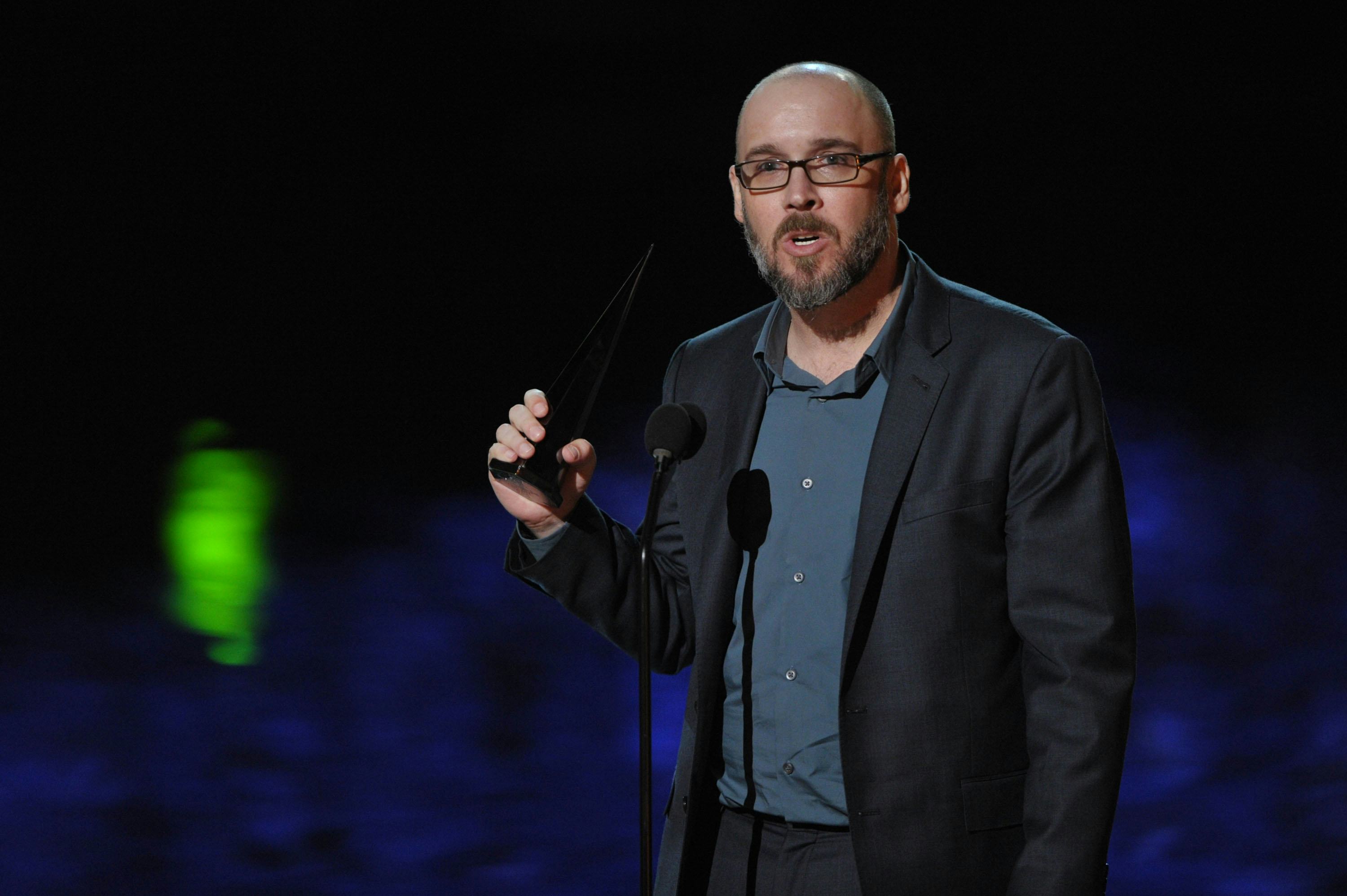
Back when they were first developing the show, Timm, Brubaker, and the rest of the Caped Crusader team (which includes J.J. Abrams, Matt Reeves, and longtime Batman animator James Tucker) had to solve a different problem. They needed a recurring plotline or mystery that could pop up throughout the season and build to a big finale. Their first idea was to tease the Joker, who — spoiler alert, final warning! — ultimately only shows up at the very end of Episode 10 as a preview of Season 2.
“Originally, there would be three or four scenes where they found a body with a weirdly twisted face, but it didn't fit in with the episodes,” Brubaker says. “When we tried to find places to put it, it just felt like, what is this?”

Thankfully, the solution had been staring them right in the face all along: Harvey Dent. The character is introduced early in the season as Gotham City’s tough-on-crime DA in the midst of a contentious political campaign for mayor. Dent has a direct connection to Barbara Gordon, a public defender and the daughter of Commissioner Gordon, who plays a major role in Caped Crusader, and he also interacts regularly with the corrupt cops who let crime run rampant in Gotham. As a rich and powerful member of the elite, he’s also just generally around at the fancy events frequented by Bruce Wayne.
“We had a way to organically weave in his storyline of running for mayor and needing to go to the mob for money and struggling with his own morals,” Brubaker says.
Once they made that connection, the rest of Dent’s story fell into place faster than Batman busting through a supervillain’s skylight.
Rethinking Two-Face

Diedrich Bader almost flunked his audition for the role of Two-Face.
“My initial approach was two very different voices,” Bader says, “thinking that there needed to be a really big difference between the sides.”
Instead, Bruce Timm and James Tucker told him to ignore that instinct. While previous portrayals of Two-Face in both animation and live-action have bordered on the cartoonish, the goal here was a grounded villain who manages to make even Christopher Nolan’s take on Two-Face in The Dark Knight look like he belongs in an Adam West adventure.
“It wasn't like schizophrenia,” Bader says. “It was just an extension of his anger and grief and resentment. It was definitely a subtler take than I had initially had.”
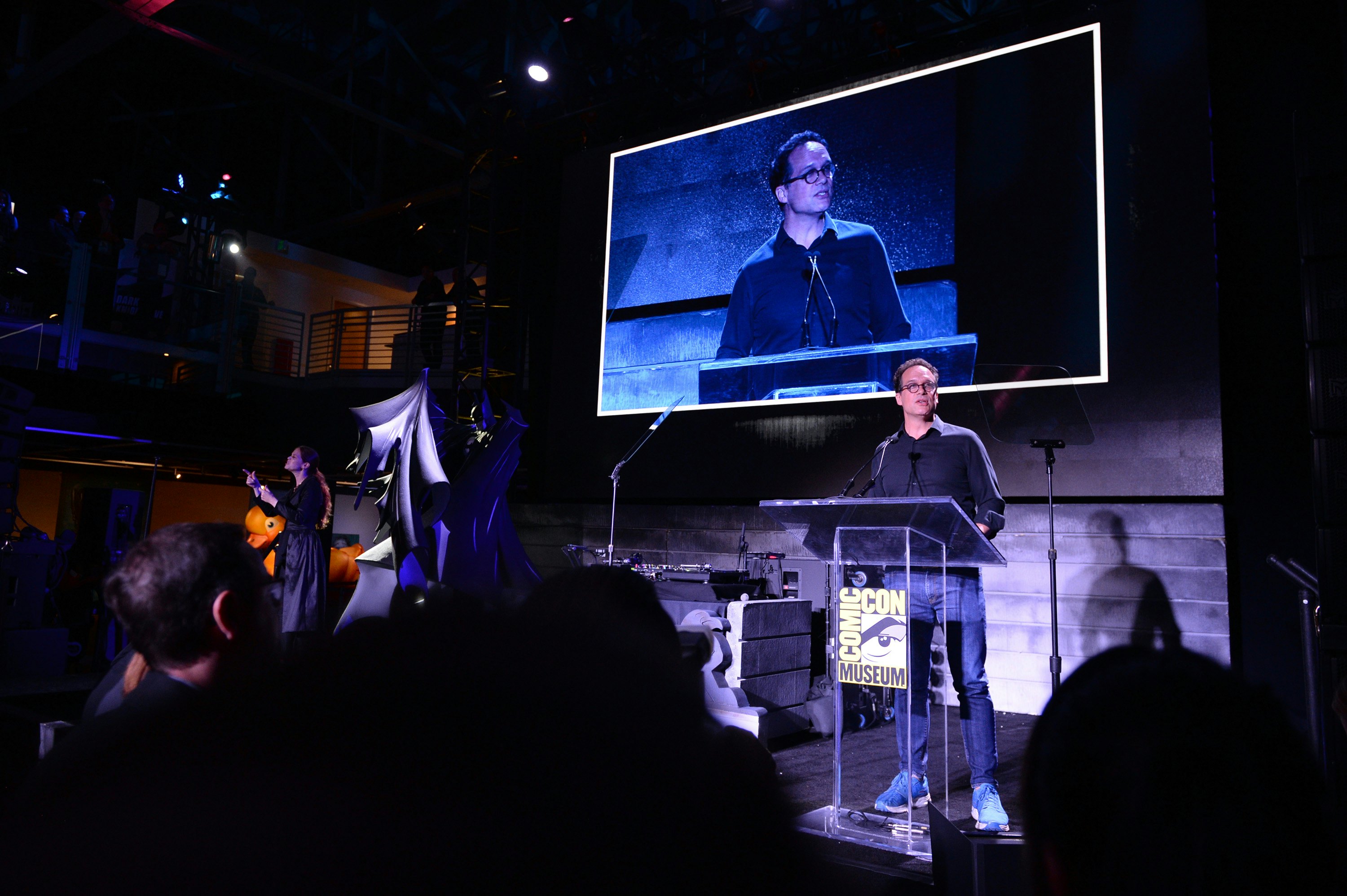
As for Dent himself (pre-Two-Face transformation), both Bader and Brubaker see the character as a very flawed human being with some genuinely good intentions.
“He's a DA who will totally bend the rules to get a conviction,” Brubaker says, “but usually he wants to think the person's actually guilty.”
Caped Crusader also presents a very different version of Two-Face, visually. Half his face is still disfigured, but there’s no discoloration like you might expect. Instead, the right side of Dent’s head looks like a melted candle. His ear is ragged and his lips are gone, revealing a mouth half-full of crooked teeth.
“I remember the first sketch that I saw of it, and I was like, Oh, that's different,” Bader says.
The actor gives full credit to James Tucker, who’s worked in the animation department on Batman Beyond, Batman: The Brave and the Bold, and various other DC animated projects.
“It was an opportunity for him to make his own stamp on things,” Bader says. “Not only is he a talented artist, but he’s a comic book geek. I don't know how else to put it. He's the real deal.”
When Harvey Met Bruce
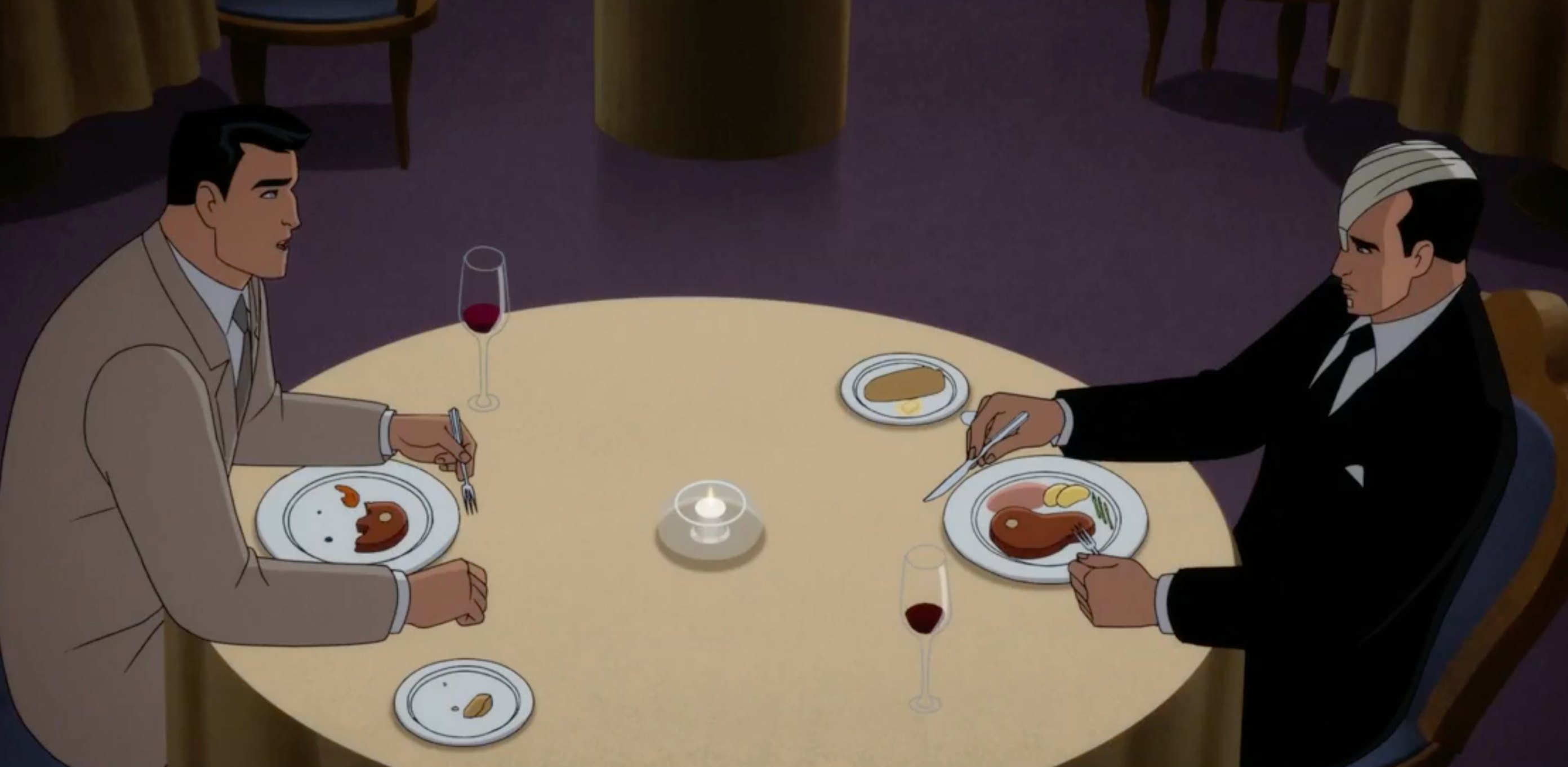
This brings us back to Harvey Dent’s dinner with Bruce Wayne.
With Dent physically transformed into Two-Face, all it takes is a bit of prodding to push him over the edge. That push, somewhat surprisingly, comes from Batman himself, who’s still new to the job and makes plenty of mistakes in his war against crime. (“He loses a lot,” Brubaker says.) In this case, one false move over dinner sends Dent on a murderous rampage that lands him behind bars.
Brubaker sees the dinner scene as a turning point not just for the villain, but also for Caped Crusader’s steely protagonist. It’s the moment he realizes that, at his core, he’s more Batman than Bruce Wayne.
“I'm undercover as Bruce Wayne trying to find out who splashed acid on Harvey Dent,” Brubaker narrates, adding: “He doesn't really care what that's doing to Harvey as a human.” This is epitomized in the way Batman attempts to explain his actions afterward. “He's trying to solve the crime, and when he justifies it, he's like, Well, Harvey did stuff like that all the time. And it's like, yeah, but Harvey's a f*cking insane person now.”
The ending — and an Easter egg
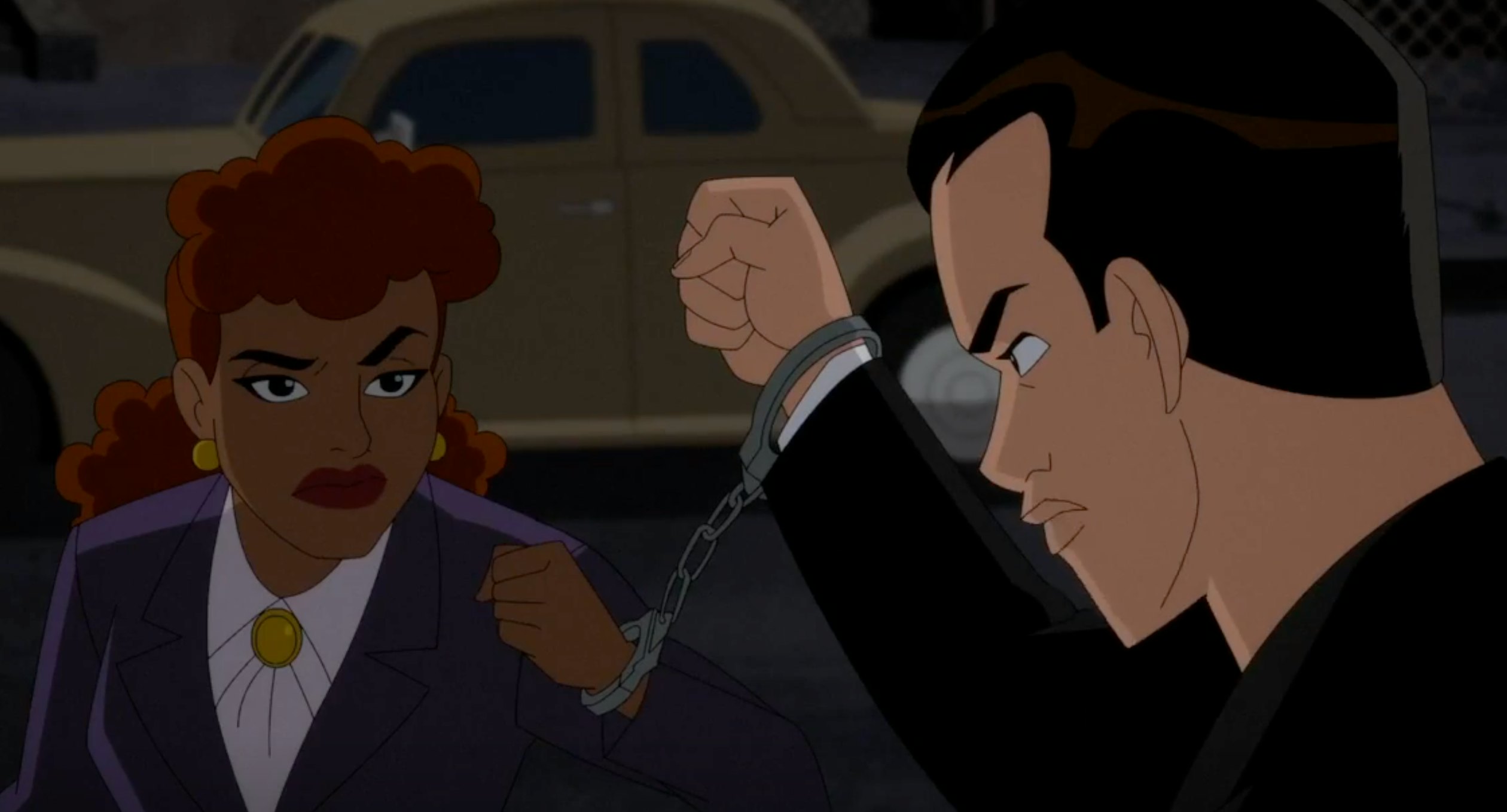
For a good chunk of Batman: Caped Crusader’s final episode, Barbara Gordon handcuffs herself to Harvey Dent. It’s her last-ditch attempt to save him, both from the mob and from his own death wish. But if you pay close attention, there’s a clever clue hidden in their dialogue as this duo makes their way through Gotham’s underbelly.
“There's another thing a lot of people haven't noticed,” Brubaker says. “The two sides of him: the mean, crazed angry side calls her Gordon; and the monster side that has humanity calls her Barbara.”
This becomes particularly important when discussing the show’s climactic ending. Surrounded by mobsters and crooked cops, Dent throws himself between Barbara Gordon and a bullet to save her life. Gordon asks a dying Dent why he made the sacrifice and he replies: “Damned if I know, Barbara.” If you’re following along with the logic — which is admittedly a little complicated — this means it was the evil side of Dent (the side that called her Gordon) that finally did the right thing.
“You realize the handsome side of him that calls her Gordon is the one that saved her,” Brubaker says.
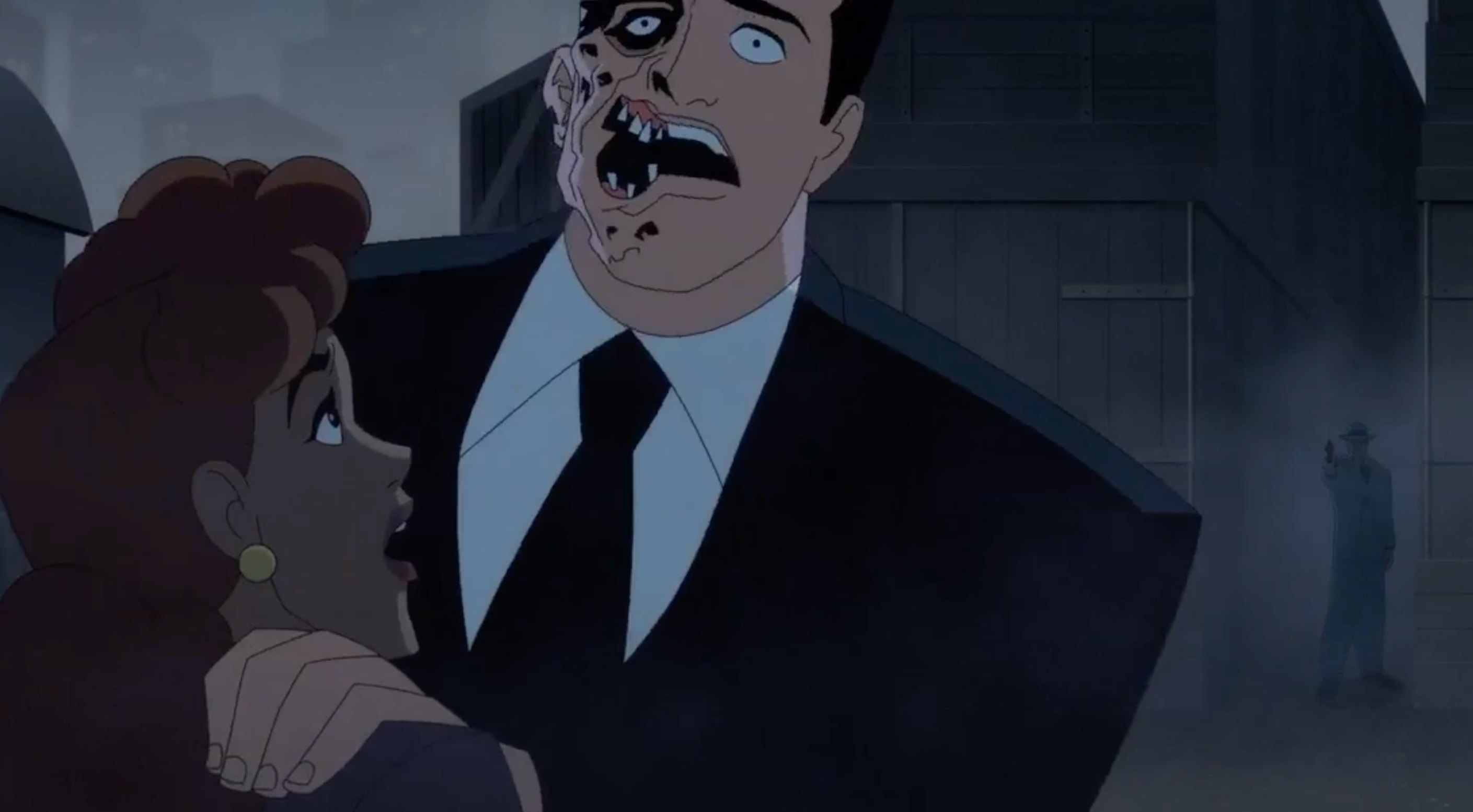
On a more symbolic level, Bader sees Two-Face’s sacrifice as an atonement for his crimes.
“Finally, Harvey becomes his real self,” Bader says. “If the story of Batman is anything, it's not a story of revenge, it's a story of redemption — that you can become a greater hero and it's up to you.”
Which brings us to the gun. With Harvey Dent dead, in a fit of rage, the Caped Crusader picks up a gun and aims it at Dent’s murderer, a crooked cop on the mob’s payroll. The music swells and the camera holds on Batman’s face as he takes aim. Then, the sound of gunfire.
For Brubaker, this is perhaps the defining moment of Caped Crusader, and one that gets at the heart of why this show feels different from any Batman story we’ve seen before.
“Because we played Batman in such a weird way where he's so remote and so cold, at least half of my friends were like, I really thought he was going to shoot the guy,” he says. “Because who the f*ck knows after these nine episodes what will happen here?”
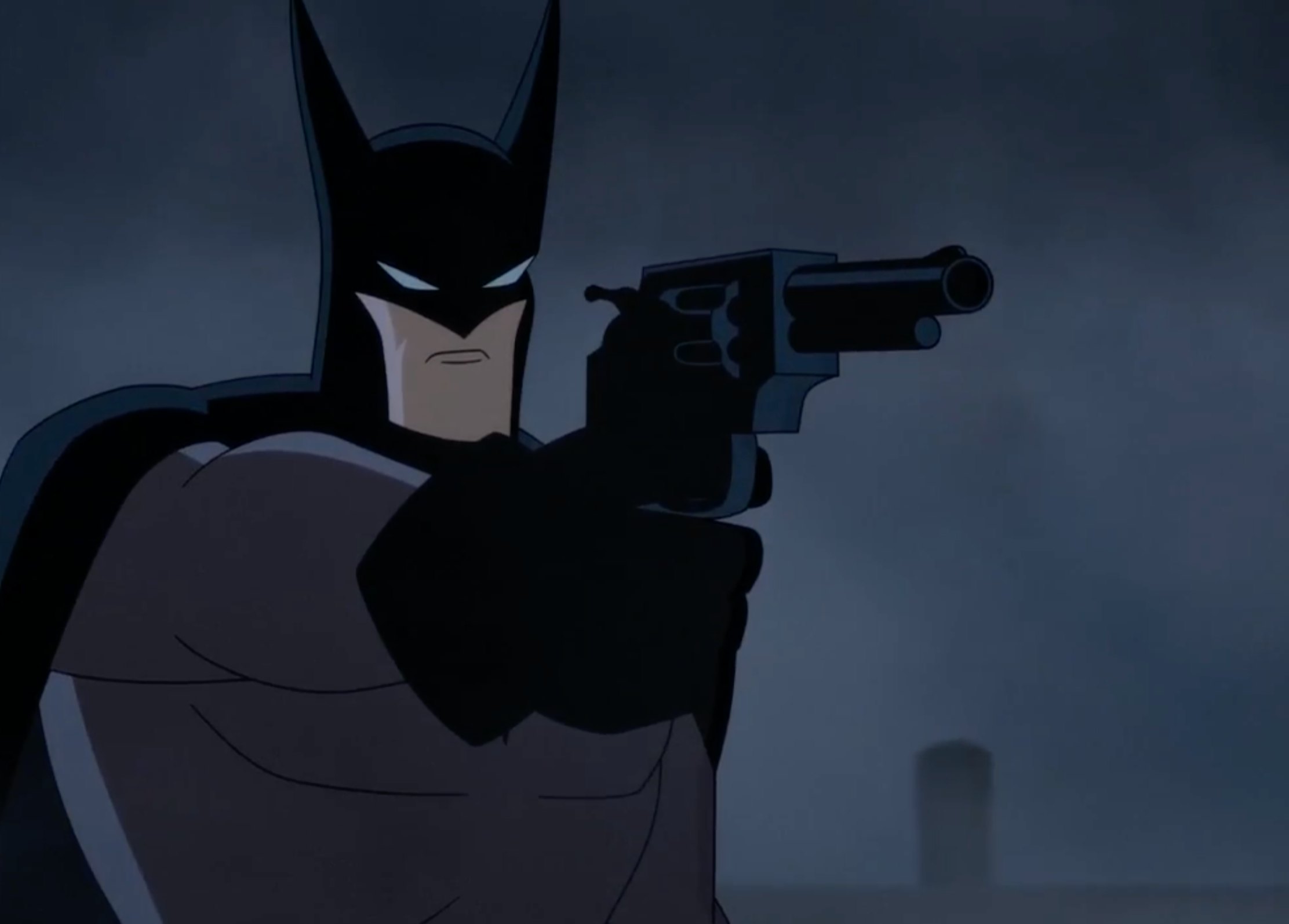
And if you’re wishing for a slightly warmer version of Batman, don’t worry. Brubaker hints that as the show continues, we’ll see a Caped Crusader who feels more familiar — even if never makes it anywhere near Adam West territory.
“He's still the same Batman underneath it all,” Brubaker says. “We’re just watching his evolution. I don't think he'll ever become the happy-go-lucky, have-sidekicks Batman. I don't believe Bruce Timm is planning to ever actually have him run around with a 10-year-old kid. That would be insane.”
The Caped Crusader and the Dark Knight
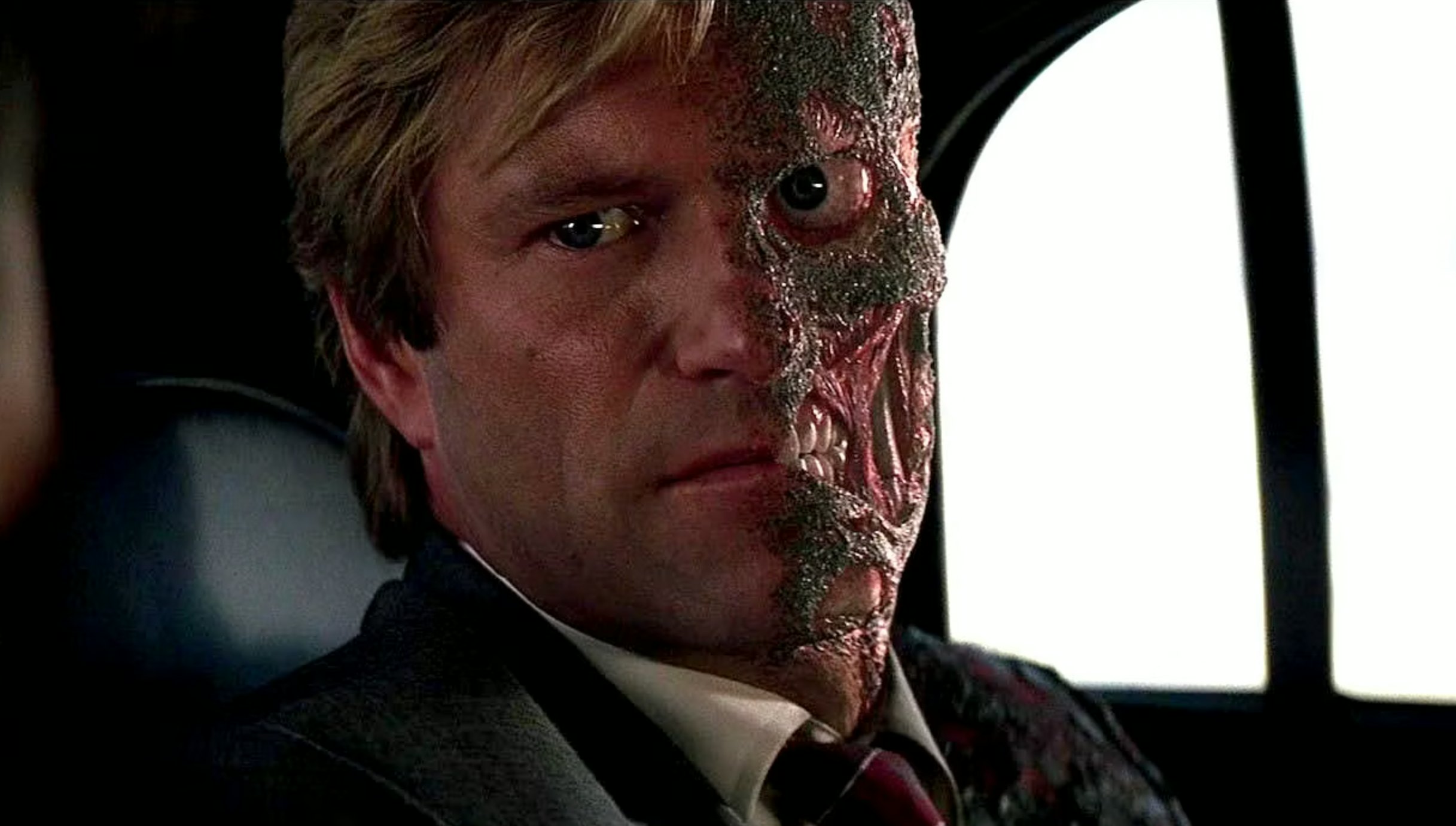
In watching Caped Crusader and its take on Two-Face’s story, it’s almost impossible not to compare the new show to Nolan’s Dark Knight movie. Both offer a grounded take on the characters and follow Harvey Dent’s rise and fall. But while Caped Crusader may have a bleaker outlook at Dent from the very beginning, Diedrich Bader has a different reason for thinking his version of the villain is superior.
“In the longer format, you're given the opportunity for characters to contradict themselves,” he says. “The idea of a cartoon, and they call it a cartoonish character, is, by its definition, two dimensional. But this writing and the length that they were given by Amazon to really stretch out and create, allows the characters to have incredible depth. You can flesh out a character in a way that you can't in a movie.
“Nolan's movies are long, but they're not this long.”







